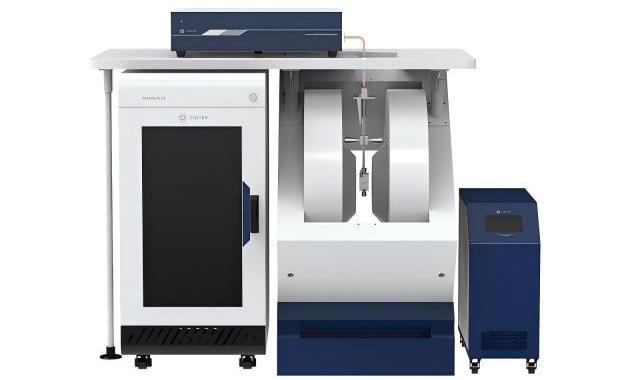The electron spin sensor has high sensitivity and can be widely used to detect various physical and chemical properties, such as electric field, magnetic field, molecular or protein dynamics, nuclei or other particles, etc. These unique advantages and potential applications make spin-based sensors a hot research direction. Sc3C2@C80, with its highly stable electron spin protected by a carbon cage, is suitable for gas adsorption detection inside porous materials. Py-COF is a recently emerged porous organic framework material with unique adsorption properties. It is synthesized using self-condensation building blocks with formyl and amino groups, and its theoretical pore size is 1.38 nm. Therefore, a metallofullerene Sc3C2@C80 unit (with a size of approximately 0.8 nm) can enter a nanoscale pore of Py-COF.
Researcher Wang from the Institute of Chemistry, Academy of Sciences, has developed a nano spin sensor based on metallofullerene for detecting gas adsorption inside porous organic frameworks. Paramagnetic metallofullerene, Sc3C2@C80, is embedded in nanoscale pores of a pyrene-based covalent organic framework (Py-COF). The EPR Spectroscopy (CIQTEK EPR200-Plus) is used to record the EPR signals of the embedded Sc3C2@C80 spin probe for N2, CO, CH4, CO2, C3H6, and C3H8 adsorbed within Py-COF. The study reveals that the EPR signals of embedded Sc3C2@C80 exhibit a regular dependence on the gas adsorption performance of Py-COF. The research findings are published in Nature Communications under the title "Embedded nano spin sensor for in situ probing of gas adsorption inside porous organic frameworks. "
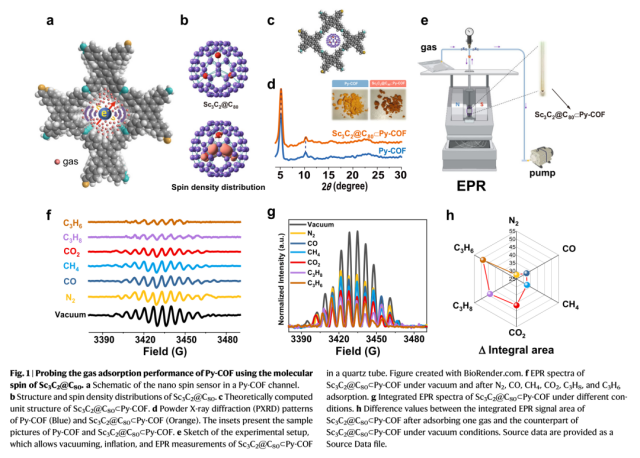
Using Sc3C2@C80 as a molecular spin probe to investigate the gas adsorption performance of PyOF
In the study, the authors used a paramagnetic metallofullerene, Sc3C2@C80 (size approximately 0.8 nm), as a spin probe embedded in a pyrene-based covalent organic framework (Py-COF) nanocage to detect gas adsorption in Py-COF. The adsorption performance of N2, CO, CH4, CO2, C3H6, and C3H8 gases in Py-COF was investigated by monitoring the embedded Sc3C2@C80 Electron Paramagnetic Resonance (EPR) signal. The study demonstrated that the EPR signal of Sc3C2@C80 was systematically related to the gas adsorption performance of Py-COF. Additionally, unlike traditional adsorption isotherm measurements, this implantable nanoscale spin sensor enabled real-time gas adsorption and desorption monitoring. The proposed nanoscale spin sensor was also utilized to investigate the gas adsorption performance of a metal-organic framework (MOF-177), showcasing its multifunctionality.
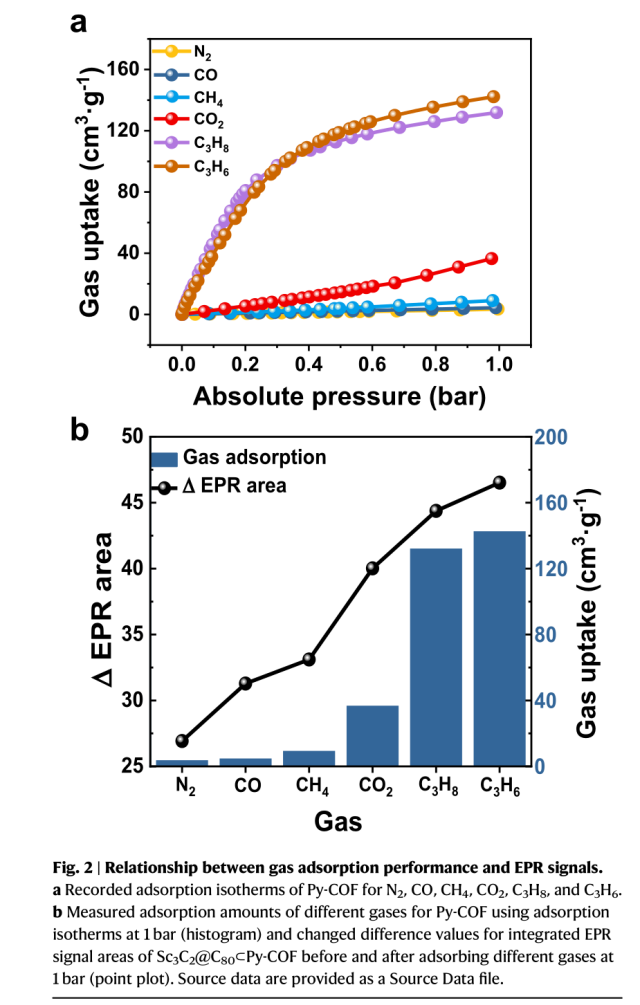
Relationship Between Gas Adsorption Performance and EPR Signal
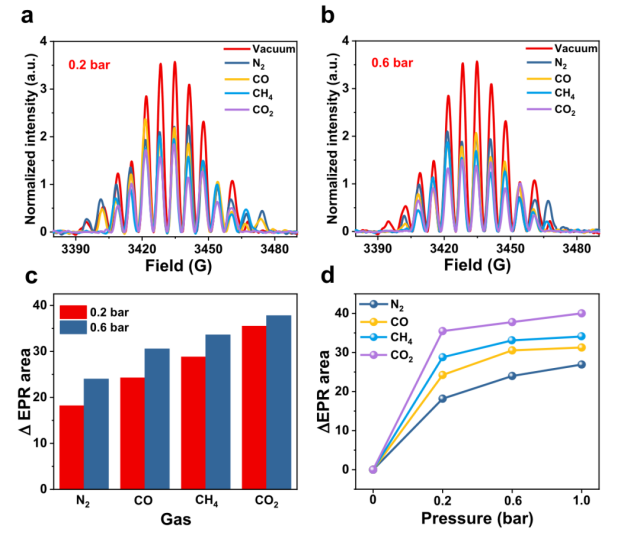
The effect of gas pressure on EPR signals
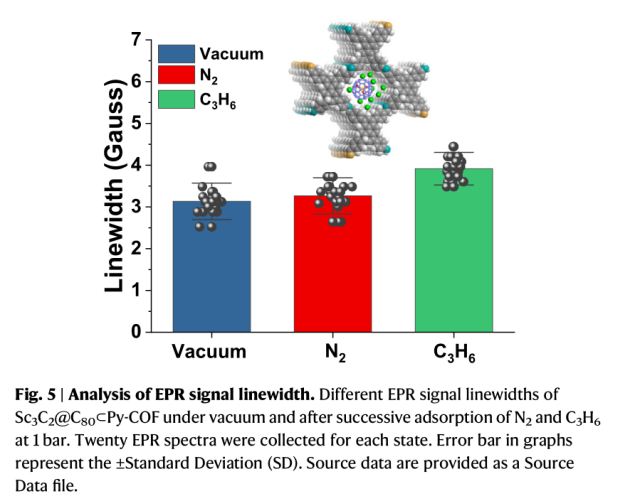
Analysis of EPR Signal LineWidth
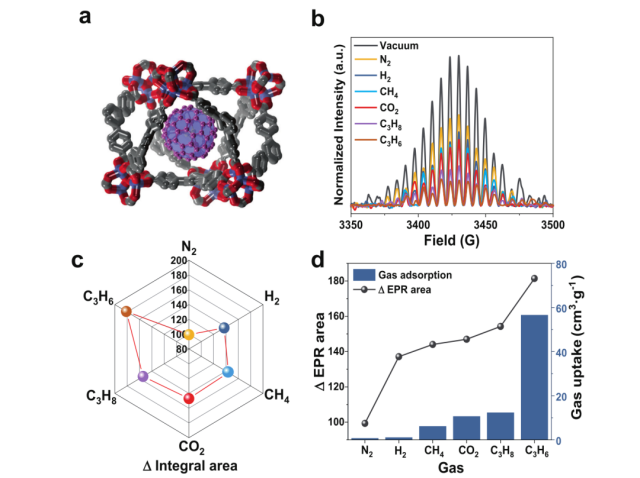
Using the molecular spin method of Sc3C2@C80 to investigate the gas adsorption process in MOF-177
X-Band CW-EPR Spectroscopy | EPR200-Plus
The CIQTEK EPR200-Plus Spectroscopy provides professional continuous wave Electron Paramagnetic Resonance solutions for industrial and academic users.
>> EPR200-Plus Accessories: Dual Mode Resonator, High-temperature System, Liquid Nitrogen Variable Temperature With Cryostat, Liquid helium Variable Temperature, Liquid Helium-free Dry Cryogenic System, Time-resolved EPR System, Goniometers, Irradiation system, Flat cell.
Electron paramagnetic resonance (EPR) or Electron Spin Resonance (ESR) spectroscopy is a powerful analytical method to study the structure, dynamics, and spatial distribution of unpaired electronics in paramagnetic substances. It can provide in-situ and non-destructive information on electron spins, orbitals, and nuclei at the microscopic scale. EPR spectroscopy is particularly useful for studying metal complexes or organic radicals so it has important applications in the fields of chemistry, materials, physics, environment, etc.
